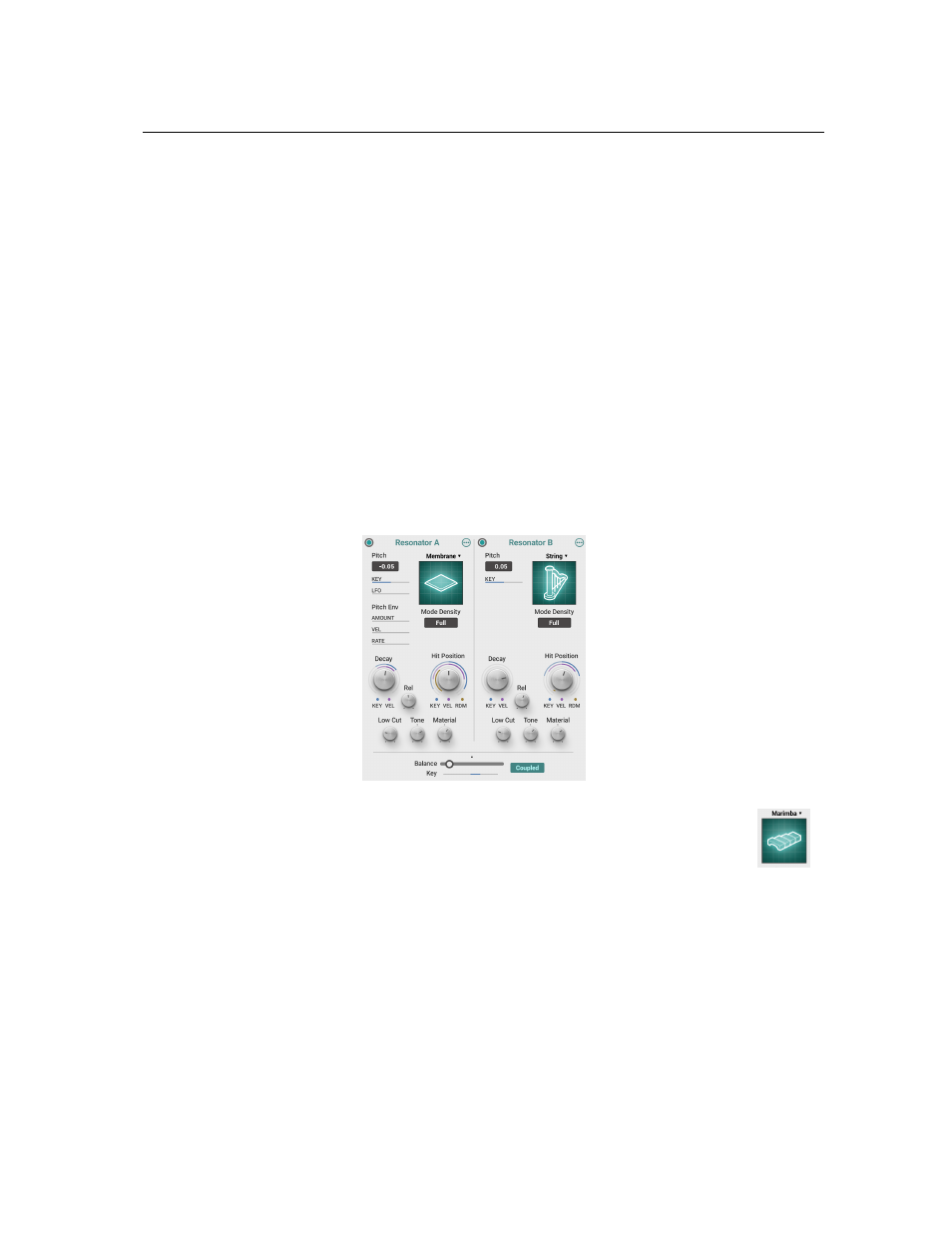The resonator module – Applied Acoustics Systems Chromaphone 3 Upgrade Acoustic Object Synthesizer Plug-In (Download) User Manual
Page 43

5.3
The Synth Section
43
and one can clearly hear individual random noise samples which may sound like individual particles
hitting the surface of the resonators. Increasing the noise density by turning the knob clockwise
increases the number of clicks generated in a given interval of time until the output starts to become
continuous. This parameter can be used to produce interesting effects by exciting the resonators
randomly. This parameter can be modulated with the the pitch or velocity signal from the keyboard
or with the output from the
Noise Envelope
or
LFO
module. The density parameter also has a
sample and hold feature which is turned
On
using the
sh
switch to the right of the
Density
knob.
When activated, a noise sample is held until a new one is triggered. This features affects the color
of the noise but is mainly there for compatibility reason with presets from version 1.
5.3.5
The Resonator Module
In
Chromaphone
, instruments are created by forming pairs of acoustic resonators. The excitation
signal from the
Mallet
and/or
Noise
source modules is sent to the resonators which can be arranged
in a series or parallel configuration. Resonator A and B can be turned
On
or
Off
by clicking on the
green led in the top-left corner of each module.
The
Resonator
selector allows one to choose the type of resonator used. The res-
onator type can be changed by clicking on the resonator icons or by using the drop-down
menu at the top of the icon display. The list of resonators include the main type of objects
used in the making of musical instruments. Available types are:
•
String
: a perfectly elastic string,
•
Beam
: a rectangular beam with constant cross-section,
•
Marimba
: a beam with variable section allowing one to obtain partials having a quasi-
harmonic ratio,
•
Plate
: a rectangular plate,
